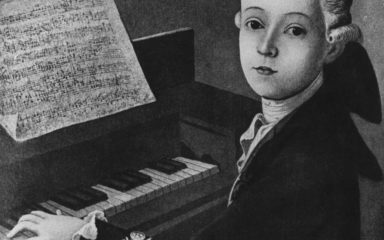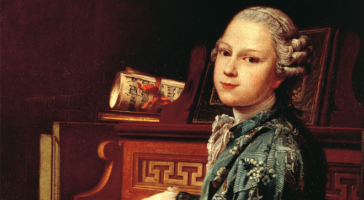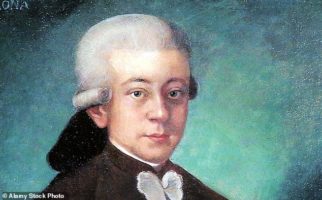
This week, I would like to introduce you to famous composer who was quite a childhood prodigy.
Most know him as Wolfgang Amadeus Mozart or simply “Mozart”. You may have also heard him called “Amadeus”. And, I would like to begin with a story about his name.
See, Mozart himself couldn’t always decide what others should call him.
Mozart – What’s in a Name?
Mozart was very much an 18th century version of “The Artist Formerly Known as Prince” or “PDiddy”. He was always changing his name! In his youth, he would often playfully change the order of names or write his name backwards (“Trazom”).
Most interestingly, his full birth name (Joannes Chrysostomus Wolfgangus Theophilus Mozart) seems to be completely missing the middle name we have all come to know so well, “Amadeus”.
It appears Mozart first used a variant of the name “Amadeus” when he was about 14 years old, calling himself “Wolfgango Amadeo”. When he was 21, he changed it to “Wolfgang Amadé”. Though this stuck as his nickname for most of the rest of his life, he would often purposefully write the accent different (“Amadè”) or eliminate it altogether (“Amade”).
The version of “Amadeus” we know seems to have come from a joke on Mozart’s part. He once wrote his name as “Wolgangus Amadeus Mozartus” (adding “us” to the end of every name).
But, Mozart wasn’t the only one in the family that enjoyed nicknames. Even Mozart’s older sister Maria Anna was more frequently called “Nannerl”.
Song of the Day
The first piece of Mozart’s music that we will listen to is called…
“Eine Kleine Nachtmusik”
In German, this name means “a little serenade” or “a little night music”.
Speaking of names, this wasn’t the official name Mozart gave this piece. In most places, he simply called it “Serenade No. 13”. Long after the piece was famous, it was named “Eine Kleine Nachtmusik” because Mozart had scribbled this in his notebook. It was just a note to himself that reminded him that the piece was a little serenade.
Here is the most famous first section of the song, which is called the “Allegro” movement:
Want to hear more? Listen to the full piece (all four movements)




